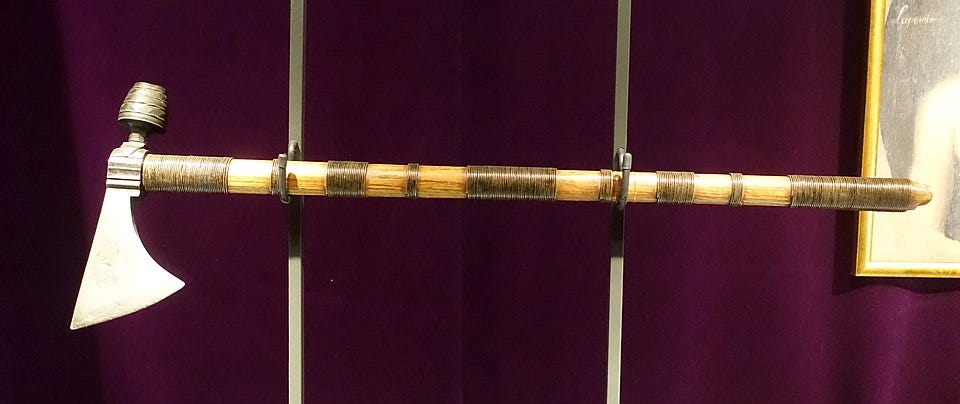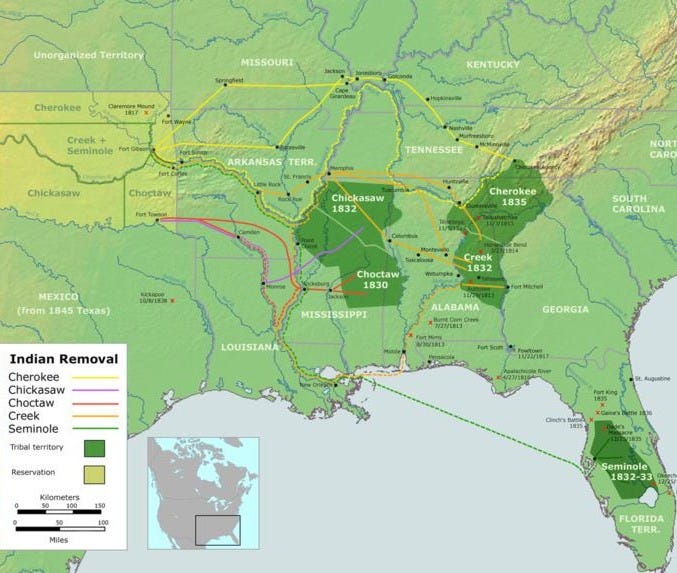A Look at Native American Reservations
The Legislation and conflicts between Native American Tribes and The United States
Since Europeans settled in the Americas, land treaties have been made between Native Americans and settlers. The first official reservation was between the Brotherton Tribes and the colonial governments of New Jersey & Pennsylvania, giving them 3,284 acres in Southern New Jersey. Known as the Easton Treaty of 1758, the relationship between Native Americans and colonists would not always be so cordial. The creation of the United States did not stop these treaties. Many remained in the realm of diplomacy, but when push came to shove, military conflict arose. By 1824, Vice President John C. Calhoun established the Office of Indian Affairs (later the Bureau of Indian Affairs) under the Department of War to centralize these actions with the various tribes. This government agency would go on to construct the United States’ responses over the next two centuries, many times to the detriment of those native tribes involved.
In 1830, Congress passed the Indian Removal Act with the sole purpose of removing and resettling the “Five Civilized Tribes” to the Indian Country reservations (now Oklahoma) west of the Mississippi River. This law was promoted by President Andrew Jackson as a way to remove “rebellious” tribes from American States to border territories. This act would go on to displace over 60,000 people between 1830 to 1850. The forced march by the U.S. military went from the Southeastern United States to the Indian Territory, resulting in the deaths of 15,000 Native Americans from famine and disease. If this legal action wasn’t bad enough, the philosophy of Manifest Destiny motivated American settlers west to the Pacific Coast. These mass migrations of settlers usually created conflicts with tribes, who were again attacked and displaced. These conflicts would usually result in harsh reprisals against Native Americans by either the military or angry mobs.
Map of Travel Routes for the Indian Removal Act
In the aftermath of the Civil War, President Ulysses S. Grant created a new principle known as the “Peace Policy”. This new administrative goal aimed to replace government oversight of the reservation system with religious officials (particularly Protestant missionaries). These organizations took over the financial, administrative, and educational care of the reservations. Unlike the government oversight, these new schools forced assimilation from Tribal to Western culture. Traditional languages, ceremonies, and beliefs were seen as heresy; usually punished with physical and mental abuse. Cases of sexual abuse against women and children on the reservations went unreported or hidden by church officials. Conflict wasn’t avoided; the forced relocations again brought war to various tribes. The worst being the Sioux War (1876-1881) with infamous battles such as “Little Bighorn” and leaders like Crazy Horse or General George Armstrong Custer. These conflicts again led to more hardship among the native population, even those who remained neutral.

Displeased with these developments, Congress passed the Dawes Act in 1887. This removed the ownership of reservation land from the tribes themselves to individuals of the tribe, which lowered the overall holdings into smaller parcels. Anything unassigned was transferred to the government and sold to non-tribal peoples. In 1934, then commissioner of the Bureau of Indian Affairs (BIA), John Collier, a Native American advocate, passed the Indian Reorganization Act. Upon the passage of this act, the more detrimental Dawes Act was revoked, the land rights of tribes were restored, the right of retention of tribal traditions was returned, and economic independence from the government was allowed. Over the next 20 years, 2 million acres of land were purchased and given to tribal reservations. Unfortunately, upon Collier’s retirement in 1954, a new policy was implemented by the U.S. Department of the Interior to remove these provisions and protections.

Currently, there are 326 federally recognized Indian Reservations in the United States. Many still struggle with issues of cultural preservation, economic sovereignty, and government oversight. The future of the native tribes of the United States is unclear, but civil rights and social equity movements have pushed these centuries-long issues to the forefront of American Society.






Nice overview. 👏👏